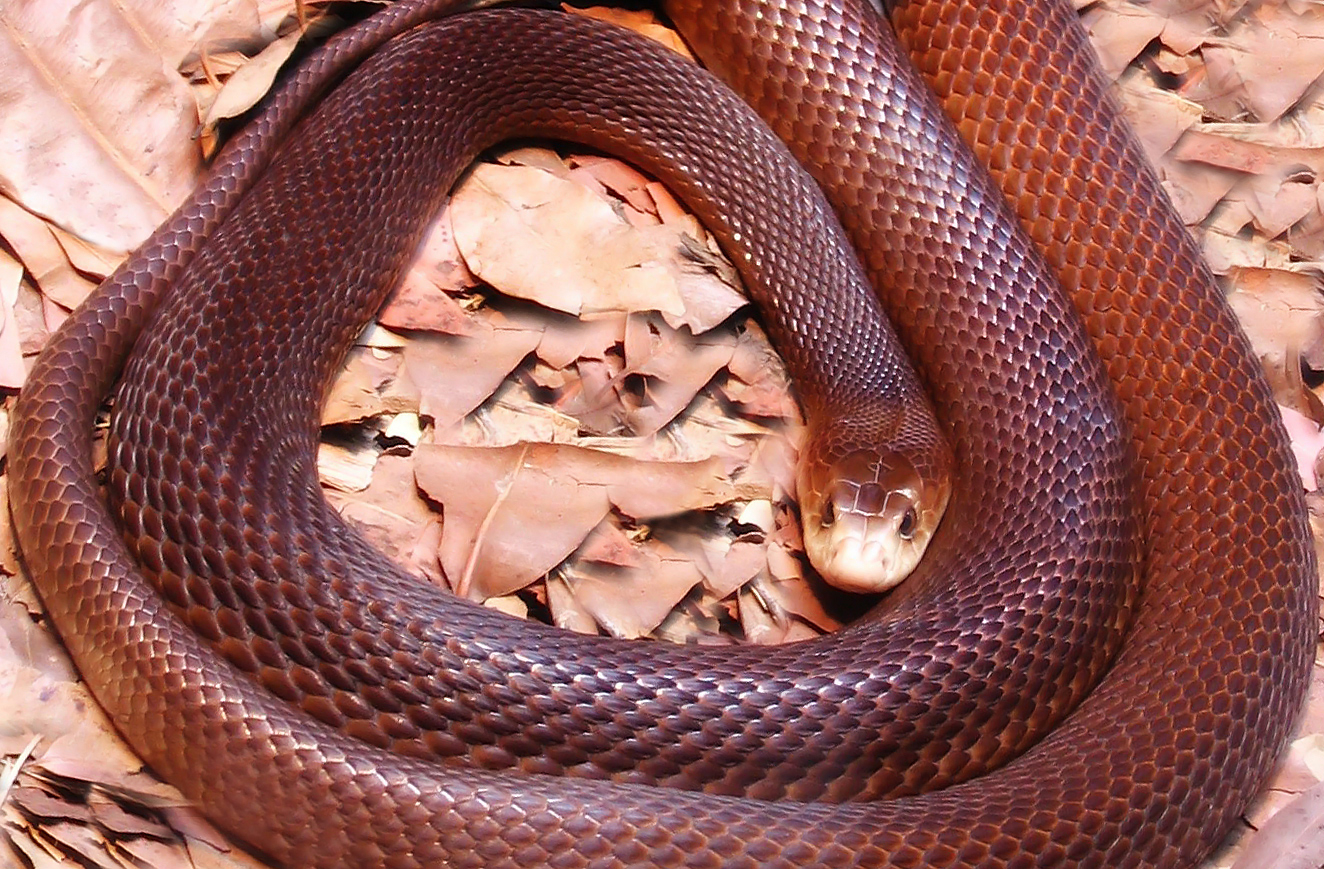Coastal taipan (Oxyuranus scutellatus)
Description: Coastal taipans are the largest venomous snake in Australia. Adult specimens of this species typically attains sexual maturity around 1.2 m (3.9 ft) in total length (body + tail). More mature specimens can grow to between 1.5 and 2.0 m (4.9 and 6.6 ft).
Habitat: Coastal taipans can be found in a variety of different habitats. They can be found in warm, wetter temperate to tropical coastal regions, in monsoon forests, wet and dry sclerophyll forests and woodlands, and in natural and artificial grassy areas, including grazing paddocks, and disused rubbish tips. The coastal taipan snake, despite its name, does live in habitats hundreds of kilometres away from the nearest beach. The can be found in northern and eastern Australia and the southern portion of the island of New Guinea.
Type of sexual reproduction: Courtship observed in captive Coastal Taipans appears to follow the basic pattern seen in many other snake species. Upon encountering a receptive female the male becomes highly excited and moves up and along the body of the female, continually tongue-flicking and rubbing his chin against her. In captivity, copulation has lasted as long as three hours and 20 minutes. Two to three months after mating the female will lay between 3 and 21 soft-shelled eggs (average of 11), usually in a log hollow, under tree roots or in cavities in the ground. In captivity females often produce a second clutch many weeks after the initial mating – this suggests the female may be able to store sperm for several months.
Eating habits: Rats, mice, bandicoots, and various species of birds make up their entire diet. Once prey is detected, the snake ‘freezes’ before hurling itself forward and issuing several quick bites. The prey is released and allowed to stagger away. This strategy minimises the snake’s chance of being harmed in retaliation, particularly by rats, which can inflict lethal damage with their long incisors and claws
Diseases and harm to humans: Its venom contains primarily taicatoxin, a highly potent neurotoxin known to cause blood clotting reactions. Without treatment expect to die within 90 minutes, and as little as 30 minutes for a severe bite. Every bite delivers a fatal dose of venom, so untreated bites have a mortality rate of 100%. They prefer to leave rather than fight, but if cornered they will strike repeatedly and can jump far off the ground.
Prevention: Avoid disturbing the snake, and if bitten, seek medical attention immediately. An antivenom was introduced in 1956, but before that fatalities were 100%.

